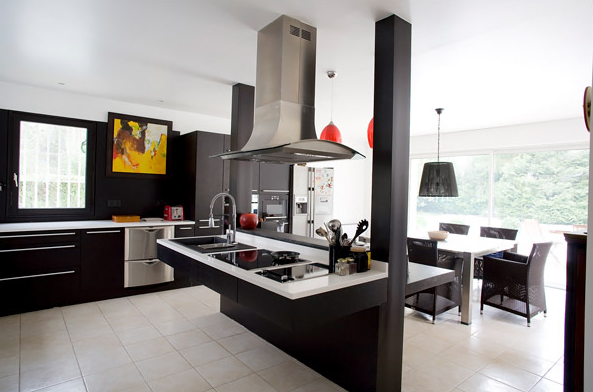
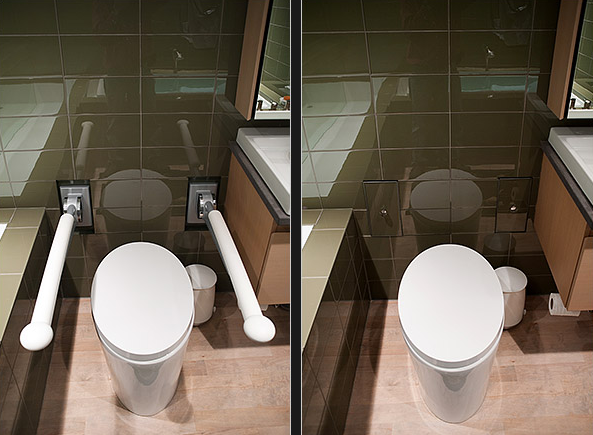
Jean-Yves Prodel, a wheelchair user, purchased a home north of Paris in 2005 and commissioned an architect to redesign it to incorporate universal design features. The result includes roll-under countertops in the kitchen, drawer-style refrigerators and dishwashers, a tile and stone roll-in shower with a grab bar and a swing-up grab bar mounted on either side of the toilet that’s easy to activate on demand, but disappears when it’s not needed. As you can see, making these changes in this gorgeous modern home haven’t affected its appearance or its usability to residents or guests who don’t use wheelchairs.
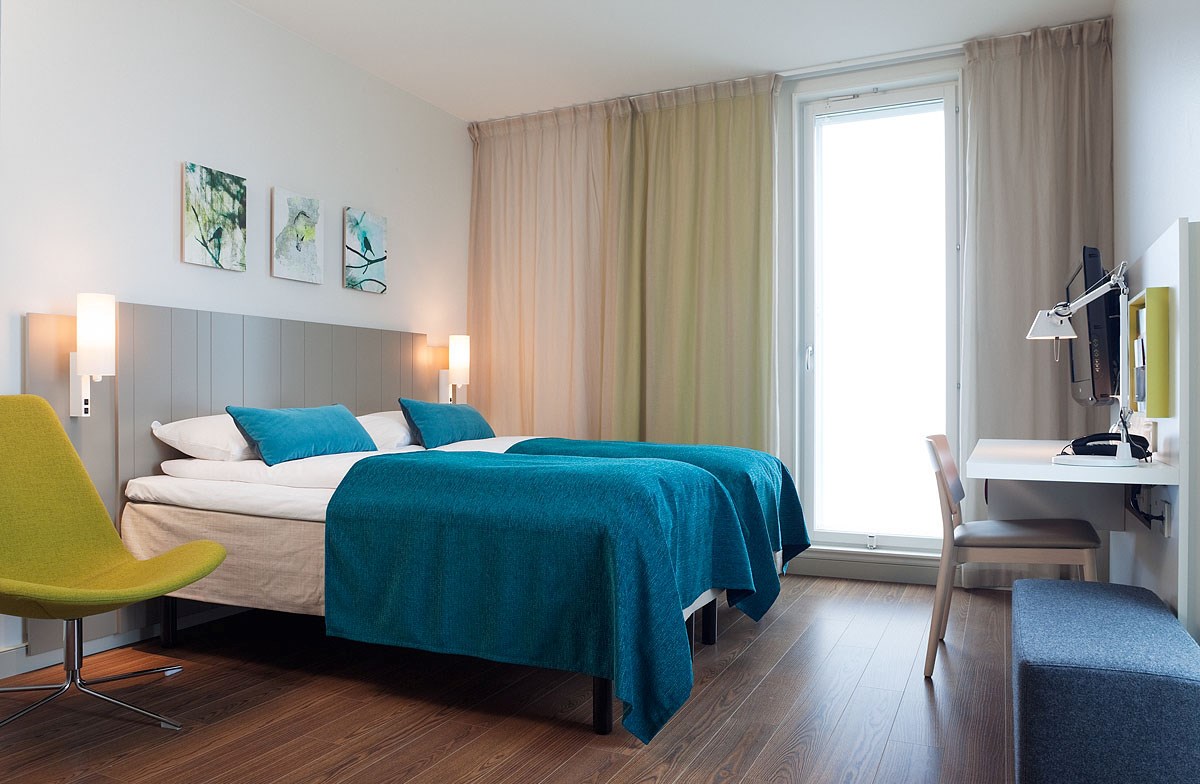
Winner of the Design and Architecture Norway competition in 2011, the Scandic Oslo Airport Hotel hired a disability ambassador to help them take steps toward greater accessibility. Magnus Berglund and his team engaged disabled guests and disability organizations to develop an accessibility standard for all Scandic hotels, and trained every member of staff to better understand what they can do to make guests of all abilities comfortable.
“Scandic Gardermoen Oslo Airport sets a new standard in the way that they have integrated universal design. As the first hotel chain to do so, they have considered all user groups in their business strategy,” says the jury. “The design does not stigmatise anyone and the building is welcoming and beautiful. All guests are met and included with good hospitality; everyone is equal and can participate on the same level in all contexts.”
“Adaptations have been made for the visually impaired, the hard of hearing and the infirm through, for example, easy accessibility, visual alarms, telephones with telecoils, a system for recharging electric wheelchairs and much more. The interior also takes into consideration people with environmental impairments, i.e. asthma, allergies or other sensitivities. For example, there are carpet-free rooms, allergy-friendly textiles, paint and materials with very low gas emissions. The staff use cleaning detergents sparingly and only use unperfumed products.”
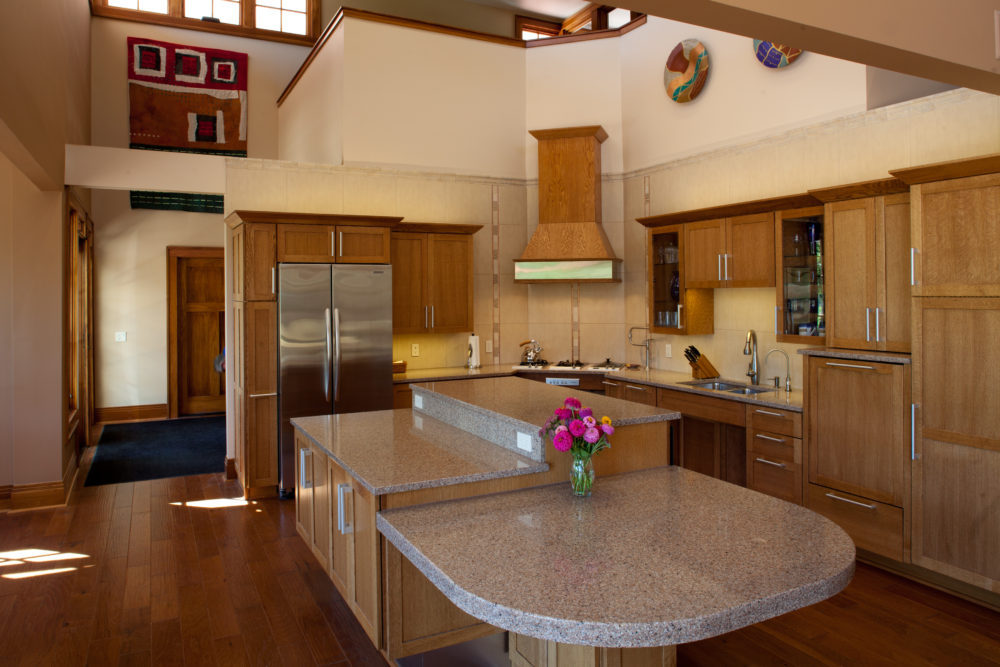
After a spinal cord injury resulted in the need to use a wheelchair, Rosemari Rossetti hired an architect to draw up plans for a new home in Columbus, Ohio, where she would reside with her husband. It took over 200 corporate contributors and 32 months to develop the space now deemed the “Universal Design Living Laboratory,” the top-rated universal design home in North America.
“Having lived in the Universal Design Living Laboratory using a wheelchair for the past five years gives me a unique perspective,” says Rossetti. “I have learned the importance of space planning and that small differences in the width of a door, height of a threshold or slope of a ramp can impact a person’s independence. I have experienced the joy of rolling on hardwood and tile flooring. No longer do I have sore shoulders as I did when rolling on the carpet in my previous home. Safety features like grab bars in the toileting area and shower have kept me from falling, and they make transfers easier. Life is easier when a home includes universal design features and products.”
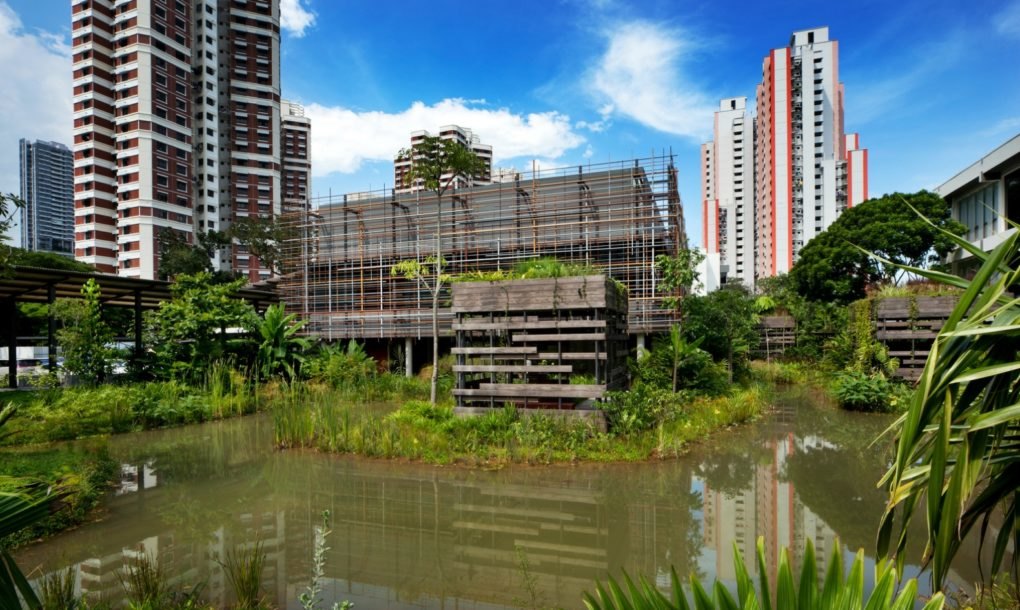
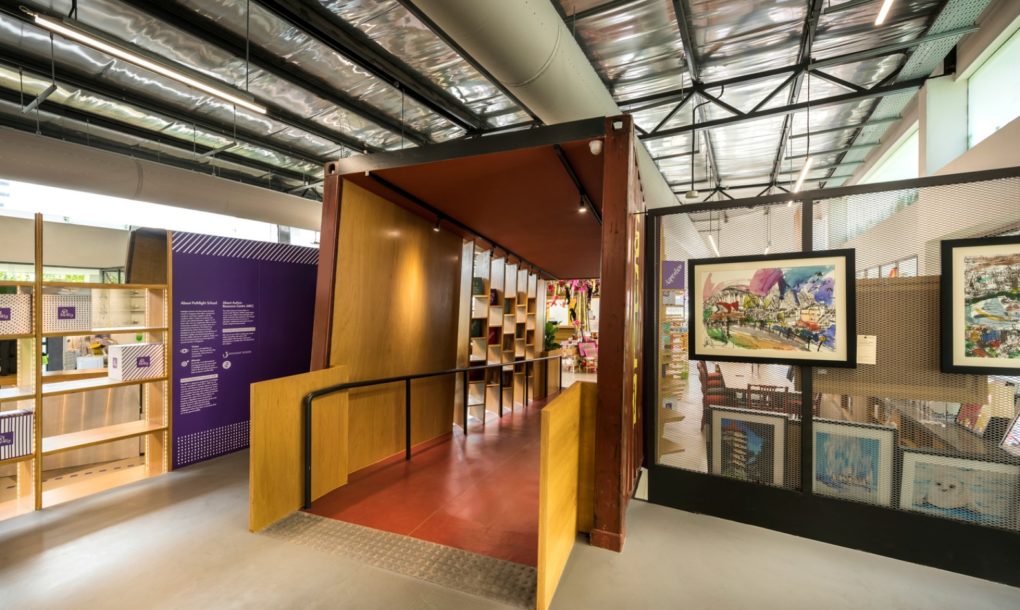
Enabling Village, a multi-use community in Singapore by WOHA, is designed to be both accessible and sustainable with a host of beautifully integrated inclusive features including elevators, low-grade ramps, tactile floor indicators and braille signs.
“ The Masterplan conceives the Village as a new community heart and opens up the space as a park to connect people with disabilities, residents and public. The design removes all physical barriers, extends linkages and creates a variety of shared spaces, gardens and amenities, breathing life between and within buildings. A simple robust palette of finishes and motifs was adopted as a kit-of-parts system to stitch together surfaces and spaces of the new and existing. The porous and accessible nature of the Enabling Village creates an inclusive environment, integrating people with disabilities as equal in the community.”
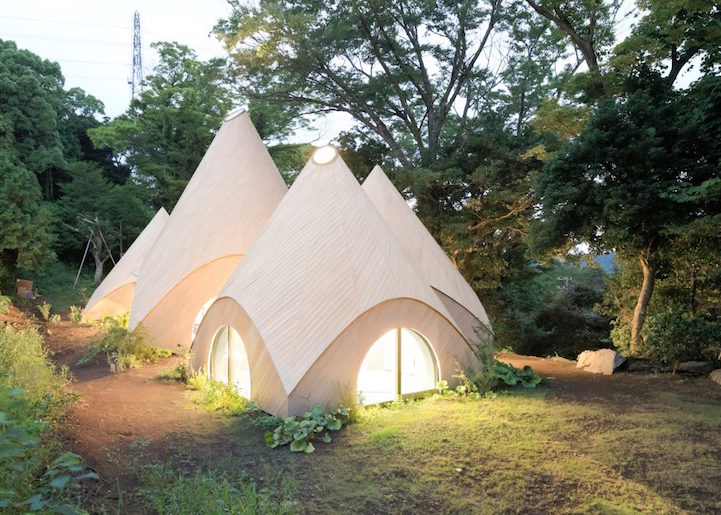
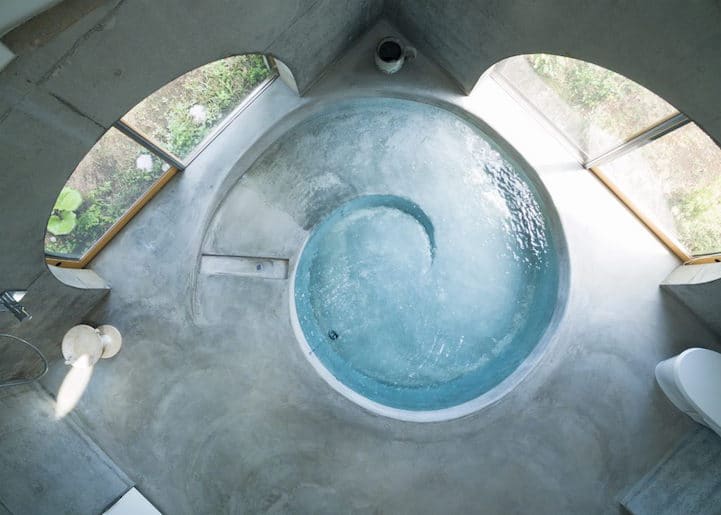
A cluster of domed houses in Japan by architect Issei Suma offer an unusual fairytale-like retirement home to a group of women with varying levels of ability and mobility. The spiraling bathtub that doubles as a ramp, built right into the concrete floor, is one of its most stunning features. It’s clear to see that this design (and the rest of the bathroom) gives wheelchair users independence, and it’s enjoyable for people who aren’t wheelchair users, as well.
ArchDaily predicts that Universal Design will be one of the big design trends of 2019. On a larger scale, urban planners are beginning to ask how we can make cities comfortable for everyone from childhood well into their elder years. These concepts are here to stay, which presents a lot of opportunities for designers to develop all sorts of interesting concepts to help bring them into the mainstream.
Check out modern architectural & technology solutions for aging communities and how smart home technology can make spaces more accessible than ever.